After having researched depreciation trends, the numbers according to the NADA Guide, and having looked at over nearly one hundred different UTVs myself on ATV Trader.com, I am ready to share with you some of the information and facts I’ve amounted to on UTV depreciation.
I’m pretty confident in the numbers that I’ve been able to see for myself, read from other blogs, and compare to actual prices from NADA and ATV Trader.com.
If you are a numbers person and want to see for yourselves the various prices and so forth links are and will be provided so you can run the numbers yourself and be an informed consumer.
A quick side note before we begin, I will be using percentages in this blog and I don’t want anyone getting confused as to what that means.
So for example, if there is 20% depreciation on a UTV that cost $20,000. Then that UTV now costs $16,000.
Visit our UTV Page for More Make and Models!
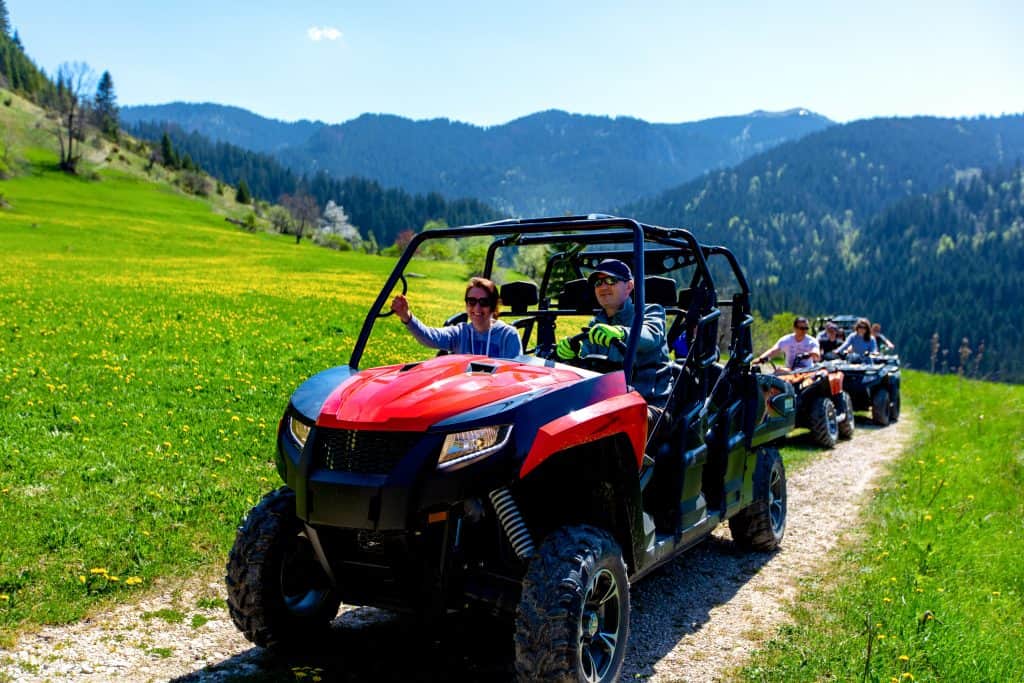
The Facts Behind UTV Depreciation
1. Buying a UTV, new, or used, is never a savvy financial decision…Ever
Have you ever had a friend that just wasn’t smart with their money and you knew they were struggling every which way with their finances?
Then one day that friend goes “Hey Matt, I’m thinking of buying a used car, well technically I already did and have the loan, you mind taking me in YOUR car to go pick up the title and such?” Then you just shake your head and tell them to get in the car.
Obviously, that was a slight anecdotal example, but the principle remains, buying a vehicle is not, and should not, be considered an investment.
I say investment in the sense of people thinking they will buy a vehicle putting money into it for “aftermarket” parts and then reselling it after extended use.
Just like a car depreciates, although cars do so a bit more quickly, so do UTVs.
For a better picture of this say you buy a brand new Polaris RZR XP Turbo S for $30,000. That UTV will only be worth roughly $19,500 meaning you just lost $10,500! I’m not sure about you but “investments” aren’t supposed to do that.
UTVs aren’t investments. No vehicle is. They’re depreciating assets. Simply put, no matter how much you wash, maintain, or wish on a star, that UTV is going to lose value.
Now I do not want this article to scare you away from purchasing a UTV, new or used. I love UTVs I think they are a great way to have fun with the kids and family.
Related Reading: What’s the Cheapest 4-Seat Side-by-Side?
2. The best bang for your buck when considering depreciation is to get a UTV in good condition that is around 2-3 years old
If you are reading this article then I am assuming you are considering purchasing a UTV and are doing your due diligence as a consumer to see what you might expect price wise. If so, congrats on being a smart consumer!
The reason I say that the best year to buy around is 2-3 years of age is that by that time, the UTV will have depreciated the quickest within that timeframe.
We’ll touch on this later, but for the most part, depreciation really slows down after the first 3 years of the vehicles original production.
Now I do have to thank Kevin from ATV Temple. Some of the research as far as depreciation values for UTVs and tidbits I have here are pulled from a blog he posted.
I made sure to run the numbers that were out there myself to ensure you guy’s are getting the best quality information and for the most part all the information previously posted or found and researched by myself is solid.
3. Be sure to maintain and take care of your vehicle
Look, I know that this fact seems pretty obvious and that we all want to go fast and have fun, but we need to make sure we do so in a safe and manageable manner.
Riding your vehicle hard and whipping it about will inevitably cause damage and affect the resale value of your UTV.
I can’t begin to tell you how many people I know who will come to me and want to sell their UTV, ATV, or even their car, and have a ridiculous asking price compared to the vehicles actual value based off of the state it is in.
I don’t care how much you bought the vehicle for, how much sentimental value it holds for you, or even the upgrades that you might have put in the vehicle.
If it isn’t well taken care of and has maintenance issues it won’t be worth much, and quite frankly no one is going to buy something like that off of you.
So in order to not have those types of problems in the future when you are going to want to sell your vehicle just be smart.
Performing regular oil changes, air filter changes/cleaning, maintenance/upkeep on the suspension, and washing the vehicle regularly as to not have rust issues, water damage or lasting effects nature has on vehicles will help the resale value and overall vehicle life go a long way.
All in all be nice and loving to your machine and it will love you back.
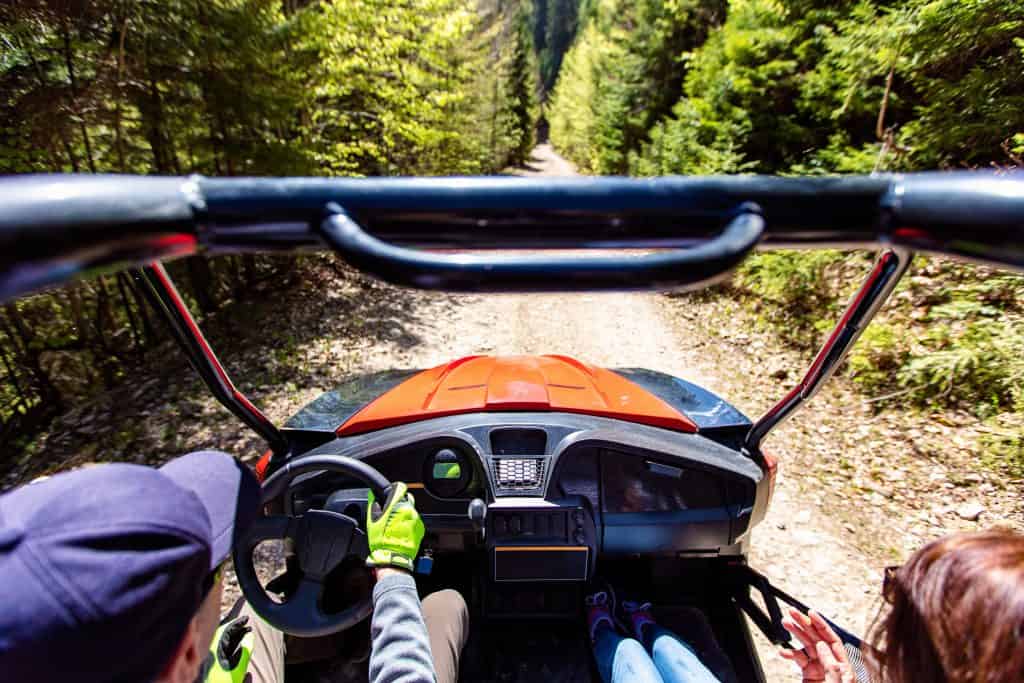
4. Utility/Work UTVs will hold their value much better than Sports/Racing UTVs will.
So I honestly didn’t know this until it was mentioned in the aforementioned blog. Needless to say upon seeing the information I hopped on to ATV Trader, as well as NADA to see for myself if this was true.
Turns out….it is! As crazy as that sounds, and I really don’t understand why it is that way, Utility vehicles I have found have depreciated much slower than their sports/racing counterparts.
For example, a Honda Big Red, a utility UTV for Honda at its peak sold new for around $11,699. Since then you can find the same Big Red UTVs that are now 6-10 years old that 8 to 9 thousand dollars. That is roughly a 30% depreciation over 10 years!
Now as for why these Utility vehicles hold their vehicle better than their sports versions one would assume would be because of the type of activities you do in them.
Typically utility/work UTVs are used for just that…work. They aren’t ran through the mud, dirt, sand, and gravel at high speeds and are not constantly being revved up putting unneeded stress on the engine.
Because they aren’t being constantly dipped through the whoops and flicked around the corners they tend to hold up longer.
Not to mention a lot of those racing/sport UTVs have different suspensions, shocks, tires, and engine components, like turbos that require a lot of extra fine-tuning as well as extra maintenance and care.
5. Never trust online listings from dealerships or public vendors.
Dealers often overprice their products so private sellers are typically the way to go and are more close to the actual price.
This is a tip that really applies to all vehicle sales, and not strictly UTVs. If you’ve ever gone used car shopping then you know how true this statement is.
Even your most “honest” dealership or public vendor will often jack up the prices of new or even used vehicles to try and turn a loftier profit.
There are many cases where online dealers will price a UTV well over a thousand dollars more than what the vehicle is worth.
Why can’t people just be honest, I mean we have the technology available to price check, I do not know. Anyways one should always be willing to haggle and talk down dealers if that is the way they are wanting to go.
Take for example a 2017 Arctic Cat Sport Limited EPS I found on ATV Trader. The vehicle was being sold from out of Jacksonville Florida, and the dealer, as this wasn’t a private seller, wanted $15,999 for the “New” UTV.
I, within minutes, found the same “New” UTV from a dealer in Georgia, that had the vehicle listed for $9,999, $5,000 less than the dealer in Florida.
That brings up another interesting point that I found and wanted to touch on here. Price tends to vary on new and used UTVs depending upon what state it is being sold from.
I couldn’t really formulate an exact percentage formula or price rate for the various states listed, as there were many, but when looking on ATV Trader or any other site where dealers and private sellers go to sell things, be sure to look around at various dealerships and states to see who has the best offer.
Now For the Numbers & Percentages: A Comprehensive List
So I’ll go ahead a make a list of various UTVs that I have pulled from my own NADA Guide research as well as some of the depreciation research done the aforementioned blogger from ATV Temple.
As I stated before I’ve gone ahead and double checked all of these percentages to see if they line up with the NADA Guide numbers, as well as some crossreferencing to ATV Trader, and they all seem to be pretty solid.
Polaris General 1000 EPS
| Year | Depreciation |
| 1 (2018) | 17% |
| 2 (2017) | 25% |
| 3 (2016) | 33% |
1-Year Old: A Polaris General 1000 EPS will lose 17% of its value after one year, It could lose a little less or a little more depending upon the mileage of the vehicle. This is just an average percentage loss after the first year.
2-Years Old: A Polaris General 1000 EPS will lose 25% of its value after two years. Special editions of this vehicle still remain near or more than the original retail value of the base model of this vehicle.
I have even seen in some cases dealerships selling a two-year old special edition model for only a few hundred dollars off the original price.
3-Years Old: A Polaris General 1000 EPS will have lost 33% of its value after 3 years. Seeing as this vehicle has only been out for 3 years, there really isn’t much else to go off of for depreciation rates.
Given the fact earlier that most UTVs will have lost 35% of their value within the first 3 years, still stands true for this model. I would expect the model to continue to diminish over the following years but at slower rates.
Kawasaki Mule 600
| Year | Depreciation |
| 3 (2016) | 30% |
| 4 (2015) | 33.5% |
| 5 (2014) | 36% |
| 6 (2013) | 38% |
| 7 (2012) | 40% |
| 11 (2008) | 55% |
3-Years Old: The Kawasaki Mule 600 will have lost 30% after its third-year release. The reason I say after the third year of release is that this UTV is no longer produced by Kawasaki.
However, I wanted to have a good comparison of how an older model, no longer produced, depreciates.
The last releasing of this model was in 2016, so the first year of depreciation would mark 2015, but taking into account that we are in 2019 you can understand the 30% depreciation after 3 years.
So for this example with the years I’m using are starting in 2016 and then the last one being 2008 marking a full 8 years of depreciation.
4-Years Old: The Kawasaki Mule 600 will have lost 33.5% after its fourth year. I couldn’t find this model of the mule on ATV Trader, but on some of the various forums and selling networks, these mules are still running close to their original value when at low miles.
5-Years Old: The Kawasaki Mule 600 will have lost 36% after 5 years
6-Years Old: The Kawasaki Mule 600 will have lost 38% after 6 years of age.
7-Years Old: The Kawasaki Mule 600 will have lost 40% after 7 years of age. So as you can see here, the 2012 model of this Kawasaki will have lost 40 percent of its original value putting it at around $4,210.
You can see how our statement of UTVs losing around 35% of their value within the first 3 years of production still holds.
Even with this older model. After that initial 30%, the percentages of depreciation have been increasing only slightly, by 2-3 percent each year.
11-Years Old: The Kawasaki Mule 600 will have lost 55% of the value after 11 years. I skipped a few years just to show how well these UTVs hold their value after the initial 3 years.
This is also a Utility/Work UTV, so as we stated earlier, these UTVs hold their value a lot better than the sport/racing UTVs and you can tell by these depreciation percentages.
I mean it takes 11 years for this Kawasaki Mule 600, to finally lose a little more than half of its value. That is astonishing in my book.
Polaris RZR 570
| Year | Depreciation |
| 1 (2018) | 10% |
| 2 (2017) | 20% |
| 3 (2016) | 30-35% |
| 4 (2015) | 35-40% |
1-Year Old: The Polaris RZR 570 will have lost only 10% of its value over the course of 1 year. This is barring any high mileage or mechanical errors.
2-Years Old: The Polaris RZR 570 will have only lost 20% of its value over the course of 2 years. As you can see this really isn’t quite that much of a value drop. If I’m planning on selling then now would be the time to do so.
3-Years Old: The Polaris RZR 570 will lose just about 30%-35% of its value. This is due to varying conditions of the vehicle as well as the miles/hours put in on the vehicle.
These RZRs run for a long time and so long as it is in good condition, and with the fact that it won’t depreciate much quicker than it has now, now would be the time to buy one.
4-Years Old: Like I said this is where the depreciation really slows down. At four years old the Polaris RZR 570 will have lost 35-40% of its value depending on its condition.
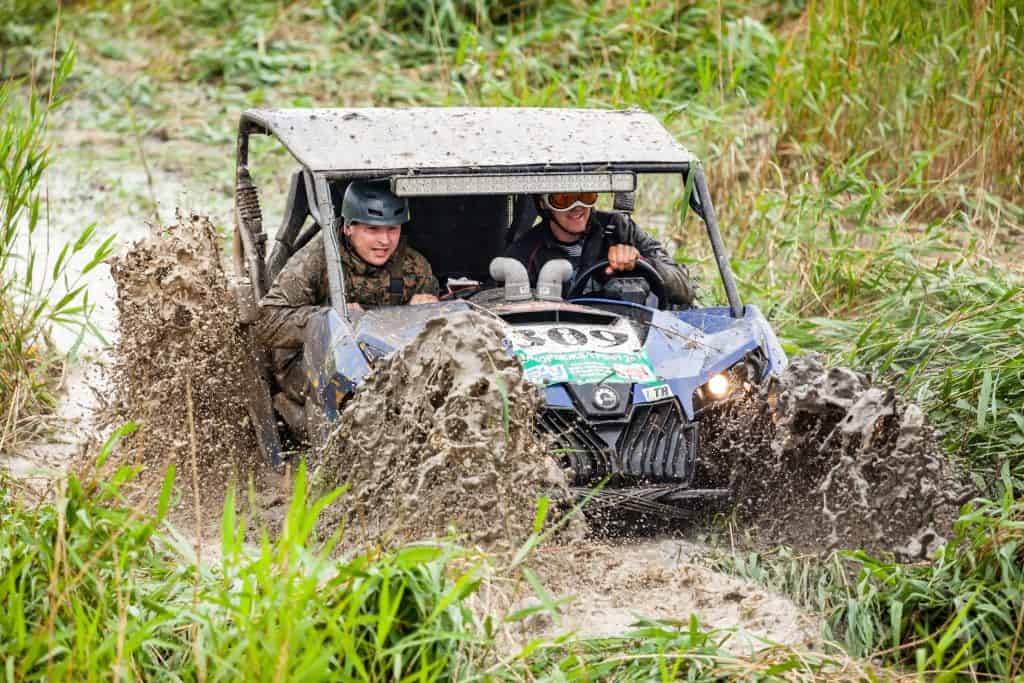
Polaris RZR 900
| Year | Depreciation |
| 1 (2018) | 11% |
| 2 (2017) | 20% |
| 3 (2016) | 33% |
| 4 (2015) | 40% |
1-Year Old: At only one year old the Polaris RZR 900 will lose 11% of its value. While that is the standard depreciation price, most dealers and even private sellers won’t list it as such.
So long as the vehicle as low mileage and is in good condition, the price won’t be very far off from the retail price of the same “new” model.
2-Years Old: With two years under its belt the Polaris RZR 900 will have lost 20% of its value. Make sure to be wary of overpricing. This model is notorious for people to overprice online especially when there is only a 20% depreciation after two years.
3-Years Old: After 3 years of age the Polaris RZR 900 will be hovering around a loss of 33% of its value.
4-Years Old: Once the Polaris RZR 900 hits 4 years of being on the market the depreciation stabilizes a bit at 40% lost value.
Polaris RZR XP 1000
| Year | Depreciation |
| 1 (2018) | 17% |
| 2 (2017) | 24% |
| 3 (2016) | 29% |
| 4 (2015) | 33% |
1-Year Old: At a whopping one year of age the Polaris RZR XP will have lost a huge 17% of the value. When looking at the average rate of these UTVs first years we are seeing 10-11 but this machine loses 17% after one year! Why?
Well, the reason is primarily that it is an RZR meaning it is a sports/racing machine. The other thing is that it is a 1000 model. Those 1000 model UTVs have the biggest engines on the market and so that can account for the high first-year depreciation.
These bigger machines just lose their value quicker than smaller models with smaller engines do.
I don’t know if that is because companies are trying to always up the ante with their “top-performance machines” and so because of that, older models fall into the background, I really don’t know.
You will see though, with a lot of these larger models that the first year depreciation percentage is higher than the smaller models.
2-Years Old: At two years old the Polaris RZR XP will have lost 24% of its value. As you can see with these large machines, it is best to buy them used. They depreciate by a lot and rather quickly.
3-Years Old: At three years of age the Polaris RZR XP starts to stabilize a bit more only losing 29% of its value. Once again prime time to buy is right here at this mark.
4-Years Old: A four-year-old Polaris RZR XP will have lost 33% of its value. At this point the depreciation will be slow going, so no sense in waiting much longer than four years to buy.
Polaris XP Turbo
| Year | Depreciation |
| 1 (2018) | 15% |
| 2 (2017) | 22% |
| 3 (2016) | 25% |
| 4 (2015) | 27-31% |
1-Year Old: We’ve finally hit one of my favorite models…the Turbo! After one year of being on the market the XP Turbo will lose 15%. Even with little use Turbo models will lose around this amount their first year.
2-Years Old: After 2 Years of age the Polaris XP Turbo will lose 22% of its value.
3-Years Old: After 3 Years of age the Polaris XP Turbo will lose 25% of its value.
4-Years Old: At four years old the Polaris XP Turbo will have lost 27-31% of its value by now. So while the Utility model UTVs hold their value well, so do turbo models. Even after 4 years, we haven’t hit a 35% depreciation.
Earlier I said that the racing models with turbos could lose value quicker because of the stress they put on a vehicle.
While that is true, you also have to consider the high demand for those turbo models. That can have a tendency to kind of balance out the quick and high depreciation percentages found in sports model UTVs.
Not only that but if the vehicle has been maintained well then there won’t be much of an effect on those percentages.
Can-Am Defender
| Years | Depreciation |
| 1 (2018) | 10% |
| 2 (2017) | 19% |
| 3 (2016) | 27% |
| 4 (2015) | 33% |
1-Year Old: At one year old the Can-Am Defender will have depreciated 10%.
2-Years Old: Once the Can-Am Defender reaches two years old it will have lost 19%. Honestly, this is a really good depreciation curve when comparing it to the other models listed.
3-Years Old: After three years the Can-Am Defender will have lost 27% percent. Numbers still reflecting that good curve I mentioned.
4-Years Old: At four years old the Can-Am Defender will have only lost 33% of its value, of course always depending on miles and condition. This vehicle really aged like a nice wine.
Can-Am Maverick Trail
| Year | Depreciation |
| 1 (2018) | 12% |
| 2 (2017) | 23% |
| 3 (2016) | 30% |
| 4 (2015) | 36% |
1-Year Old: At a year old the Maverick Trial will lose 12% of its value
2-Years Old: With 2 years of age the Maverick Trail will lose only 23% of its value, this is one of my favorite mid-range UTVs so it is nice to see it holds its value.
3-Years Old: At three years old the Maverick Trail loses 30% of its value.
4-Years Old: At four years old the Maverick Trail loses 36% of its value. So even though it isn’t the best numbers we’ve seen the Maverick Trail ages quite nicely.
Can-Am Maverick Sport
| Year | Depreciation |
| 1 (2018) | 12% |
| 2 (2017) | 23% |
| 3 (2016) | 30% |
| 4 (2015) | 36% |
1-Year Old: The Maverick Sport depreciates the exact same as the Maverick Trail interestingly enough. So at year one, the Sport loses 12% of its value.
2-Years Old: At two years old the Maverick Sport loses 23% of its value.
3-Years Old: With three years of age the Sport will have lost 30% of its value.
4-Years Old: Finally at four years old the Maverick Sport loses 36% of the value.
Can-Am Maverick X3
| Year | Depreciation |
| 1 (2018) | 13% |
| 2 (2017) | 23% |
| 3 (2016) | 32% |
| 4 (2015) | 36% |
1-Year Old: The Maverick X3 is by far one of my favorite UTVs by Can-Am its big, fast, and mean. It also only loses 13% of its value after a year.
2-Years Old: The Maverick X3 will have lost around 23% of its value by the second year. Most of these models won’t have many miles on them by this point in time. People really like to baby these more pricey models.
The good news is you won’t usually have to worry about buying damaged ones because people are a tad bit more careful with them, especially if it is Can-Ams top racing model.
3-Years Old: The Maverick X3 will lose 32% of its value after three years. So we see that this model is sticking to that average depreciation trend we stated at the beginning of the blog.
4-Years Old: The Maverick X3 will lose 36% of its value at this point in time.
Yamaha Wolverine
| Year | Depreciation |
| 1 (2018) | 11% |
| 2 (2017) | 22% |
| 3 (2016) | 30% |
| 4 (2015) | 36% |
1-Year Old: The Wolverine will lose 11% of its value in the first year, and it seems to keep its value pretty well in the following years as well.
2-Years Old: The Wolverine will have lost 22% of its value after two years.
3-Years Old: The wolverine will lose 30% of its value at this point.
4-Years Old: The Wolverine will have lost 36% of its value by this point in time, so overall the depreciation isn’t too bad for this model.
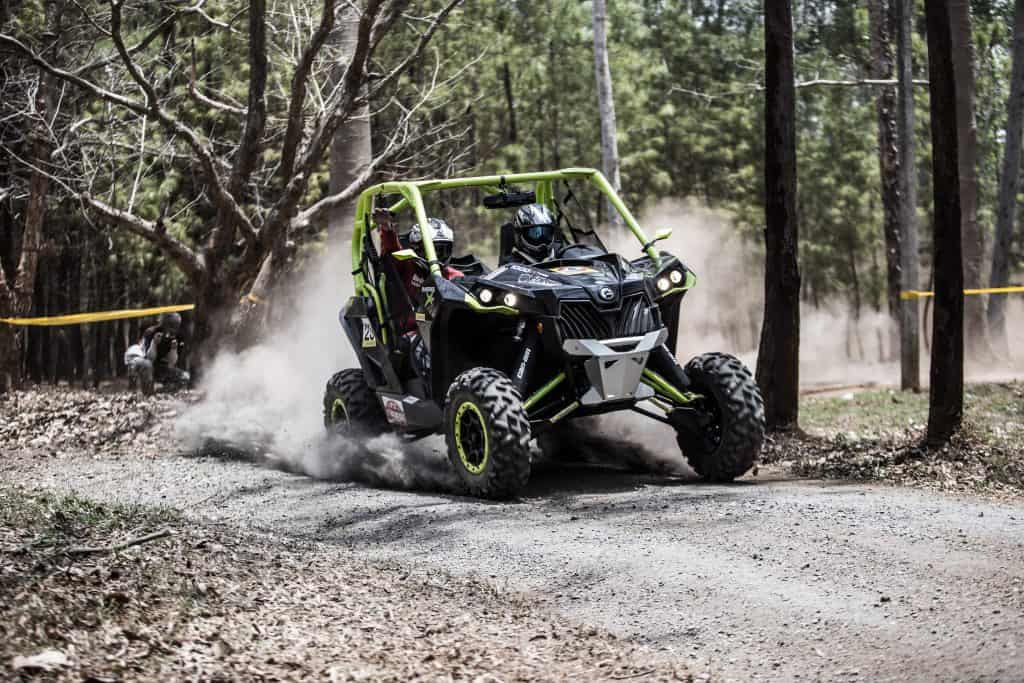
Yamaha Wolverine X4
| Year | Depreciation |
| 1 (2018) | 13% |
| 2 (2017) | 24% |
| 3 (2016) | 31% |
| 4 (2015) | 35% |
1-Year Old: Lastly we will finish this lit off with my favorite UTV by Yamaha and perhaps my favorite family-style UTV, the Wolverine X4. The Wolverine X4 loses 13% the first year.
2-Years Old: The Wolverine X4 will lose 24% of its value at two years.
3-Years Old: The Wolverine X4 will have lost 31% of its value by now, most used models have low miles so keep your eyes out for those to get the family a nice gift!
4-Years Old: The Wolverine X4 will have lost 35% of its value.
A Word of Warning
Just a word of warning before we finish this blog off. We’ve mentioned it a few times throughout the post but be wary of online pricing! Make sure whenever you buy a UTV or any vehicle to do your due diligence in price crossing.
This list isn’t an all-inclusive list of UTVs either. There are so many more that depreciate at different rates, but for the most part, they will stick to these patterns.
Also, be wary of prices that are extremely off from these depreciation percentages. Usually, that will mean that the vehicle has a problem with it or is broken.
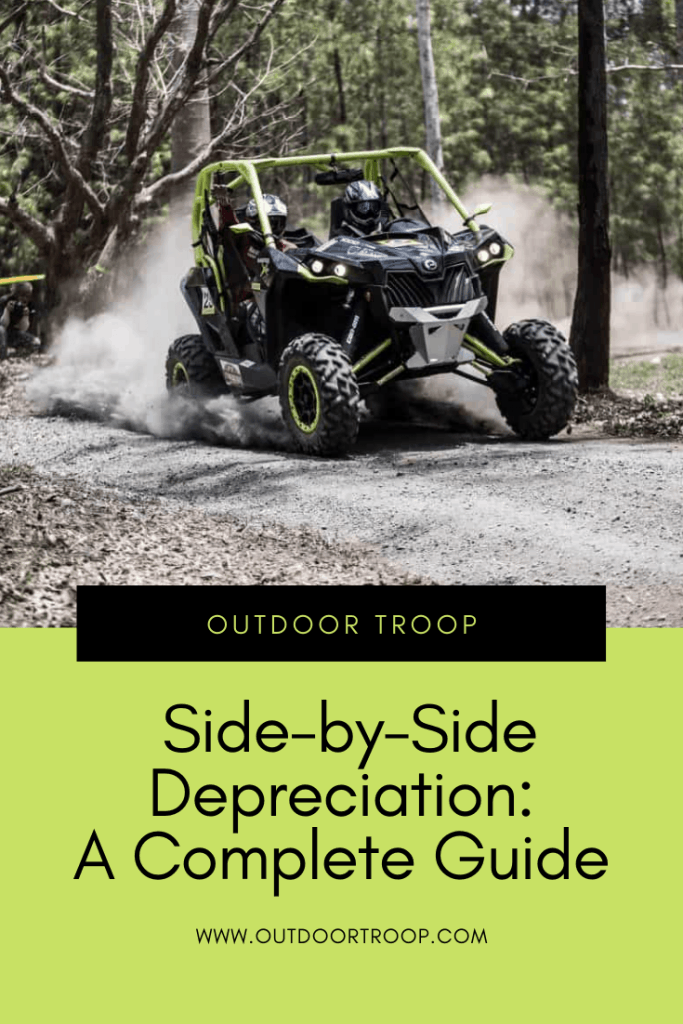
Basically, shop smart and don’t get ripped off, use these depreciation percentages to give you a basis for pricing for UTVs and have fun shopping!
